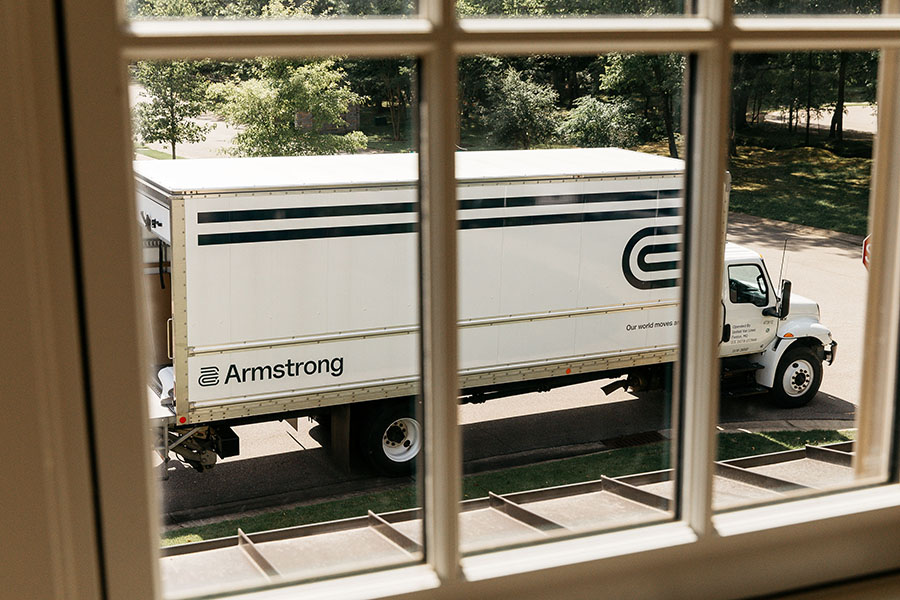How Long Does It Take to Move Cross-Country? Unveiling the Timeline

Moving across the country—spanning distances like New York to California—is undeniably exciting. But let’s face it, it can also feel pretty overwhelming. The logistics, the distance and the sheer number of decisions to make can seem like a mountain to climb. One of the most common questions we hear is, “Just how long will this whole process take?”
The truth is, there’s no one-size-fits-all answer. The duration of a cross-country move can vary significantly depending on several key factors. But don’t worry! In this blog post, we’ll break down those factors, shed light on the general timeline you can expect and equip you with the knowledge to plan your move with confidence.
General Moving Timelines: A Closer Look
So, you’re ready to embark on your cross-country adventure! While the excitement is building, it’s important to have a realistic understanding of the time commitment involved. Let’s break down the typical timeline for a cross-country move, step-by-step, so you can plan accordingly and ensure a smooth transition to your new home.
- Planning and Preparation (1-2 months): Cross-country moves involve a lot of logistics, from finding a mover to arranging utilities at your new place. The more complex your move, the more time you’ll likely need for planning.
- Packing and Loading (1-4 days): This depends heavily on the size of your home and how much stuff you have. If you’re hiring professional packers, it could take less time, but it’s still reasonable to expect it to take a few days.
- Transit Time (Several days to a few weeks): The distance of your move is the primary factor here. Coast-to-coast moves will naturally take much longer than moves across a few states.
- Unloading and Unpacking (1-4 days): Again, this depends on the volume of your belongings. Unpacking can be a lengthy process, but having help can speed it up.
- Settling In (A few weeks): Unpacking and arranging furniture is one thing, but truly feeling settled in your new home can take additional time. This timeframe allows for getting familiar with your new surroundings, setting up utilities and adjusting to a new routine.
However, it’s important to understand that several factors can influence the actual duration of your relocation. These factors range from the distance you’re traveling and the services you choose, to the time of year you decide to move and even unforeseen circumstances that may arise along the way.
Factors Affecting the Duration of a Cross-Country Move
Now that we have a general sense of the moving timeline, let’s explore the key factors that can influence its duration. Understanding these factors will empower you to plan more effectively and anticipate potential delays.
Distance of Your Move
The distance of your move plays a significant role in determining the overall transit time. A cross-country trek spanning thousands of miles will naturally take longer than a move across a few states. The further the distance, the more time is required for the moving truck to travel.
On average, a moving truck driver covers about 400-500 miles a day. For cross-country moves spanning thousands of miles, this translates to several days of transit time. For example, a move from New York to Los Angeles, which is roughly 2,800 miles, could take 5-6 days just for the transit time alone.
Logistics of Long-Distance Moves
Beyond just the miles, long-distance moving involves specific logistics that can add to the overall duration. Moving companies often use tractor-trailers to consolidate multiple shipments, meaning your belongings might share the truck with others along the route, leading to additional stops and potential delays.
Additionally, federal regulations limit how long truck drivers can operate each day. Per the Department of Transportation (DOT), drivers can legally drive up to 11 hours per day, but they must take a 10-hour break before driving again. This impacts the overall transit time, even for seemingly straightforward routes.
Moving Company and Services
The moving company you pick and the services they offer can really make a difference in how long your move takes. Different cross-country moving companies operate on their own schedules, have different transit times and work at different speeds.
If you opt for a full-service move where the movers take care of everything—packing, loading, unloading and even unpacking at your new place—it can often be faster and more efficient than handling some of those tasks yourself.
Time of Year and Weather
Summer is peak moving season, which means higher demand and potentially longer wait times for scheduling and transit. If you have flexibility, consider moving during the off-season (fall or winter) to potentially avoid delays. Weather can also play a role, especially during winter. Snowstorms, icy roads or other severe weather conditions can cause unexpected delays and add time to your move.
Unforeseen Circumstances
Even with meticulous planning, unforeseen circumstances can arise. Truck breakdowns, traffic accidents or even personal emergencies can impact your moving timeline. It’s wise to build buffer time into your plan and have a contingency plan, just in case. Flexibility and adaptability are key when it comes to cross-country moves.
Tips and Tricks to Make Your Move More Efficient
While there’s no way to completely eliminate the time it takes to move across the country, there are plenty of strategies you can use to streamline the moving process and make it more efficient. From clever packing techniques to leveraging the expertise of professional movers, let’s explore some valuable tips to help you save time and minimize stress during your relocation.
Packing Smarter, Not Harder
- Early Bird Gets the Worm: Begin packing non-essential items weeks in advance to avoid a last-minute rush.
- Declutter is Key: Donate, sell or discard unused items. The less you move, the faster the process.
- Strategic Packing: Use proper materials, label clearly and create an inventory for easy unpacking.
- Professional Help: Consider partial packing services if you’re pressed for time or overwhelmed. This can help you pack quickly and ensure your belongings are properly protected for the journey.
The Power of Professional Movers
- Choose Wisely: Research cross-country movers, read reviews and get multiple quotes to find a reliable partner.
- Clear Communication: Convey your timeline and any specific needs to your movers for a smooth transition.
- Value-Added Services: Explore options like unpacking and furniture assembly to save time upon arrival.
Expect the Unexpected
- Buffer Time: Add a few extra days to your timeline to account for potential delays.
- Flexibility is Key: Be prepared to adjust your schedule and remain calm if unexpected situations arise.
- Backup Plan: Have a plan for temporary accommodation and essentials in case of delays.
By implementing these tips and partnering with experienced professionals like Armstrong, you can navigate your cross-country move with greater efficiency and peace of mind.
Understanding Delivery Timeframes
Reputable cross-country movers understand the importance of timely service and will do their utmost to meet the estimated delivery date outlined in your agreement. In the event of unforeseen delays, it’s crucial to maintain open communication with your moving company. They will typically provide a clear explanation for the delay and work collaboratively with you to find a satisfactory resolution.
Remember, selecting a reputable cross-country moving company with a strong commitment to customer service can significantly enhance your overall moving experience, even when faced with unexpected challenges.
Your Cross-Country Move Starts Here
Moving across the country is a significant project. Understanding the timeline involved, influenced by factors like distance, logistics, chosen services and even the weather, is crucial for a successful transition. Remember, while the average cross-country move can take 15-20 days, careful planning and flexibility are key to navigating potential delays.
By starting early, decluttering, packing strategically, and communicating openly with your movers, you can streamline the process and minimize stress. Also, prepare for your household move with the Essential Glossary of Moving Household Goods. At Armstrong, we’re here to guide you every step of the way, offering personalized moving plans, and accurate estimates and ensuring your belongings arrive safely and on time.
Embrace the journey, plan wisely, and let Armstrong’s expertise as a professional moving company help you turn your cross-country move into a smooth and memorable experience. Contact us today for a free quote and let’s embark on this exciting new chapter together!
FAQs About Moving Cross-Country
How early should I book movers?
It’s strongly recommended to initiate contact with moving companies and request quotes at least 6-8 weeks before your desired moving date, especially if you’re planning to move during the peak season. This proactive approach allows you ample time to conduct thorough research, compare different moving companies and secure your preferred moving date before they get booked up.
How early should I start packing for a move?
Ideally, you should start packing for a move around 4-6 weeks before your moving date. This allows ample time to declutter, organize your belongings and pack gradually without feeling overwhelmed. You can begin by packing items you rarely use and gradually work your way up to essentials as the moving date approaches.
What can cause delays during my move?
Several factors, such as severe weather conditions like snowstorms, hurricanes or heavy rains, unexpected traffic congestion or accidents on major highways, mechanical issues with the moving truck necessitating repairs and high demand during peak seasons, can potentially cause delays during your cross-country move.
What’s the best time of year to move cross-country?
The best months to move cross-country are typically during the off-season, which falls between October and April. During these months, demand for moving services is lower, leading to reduced moving costs and potentially greater flexibility in scheduling your move.
